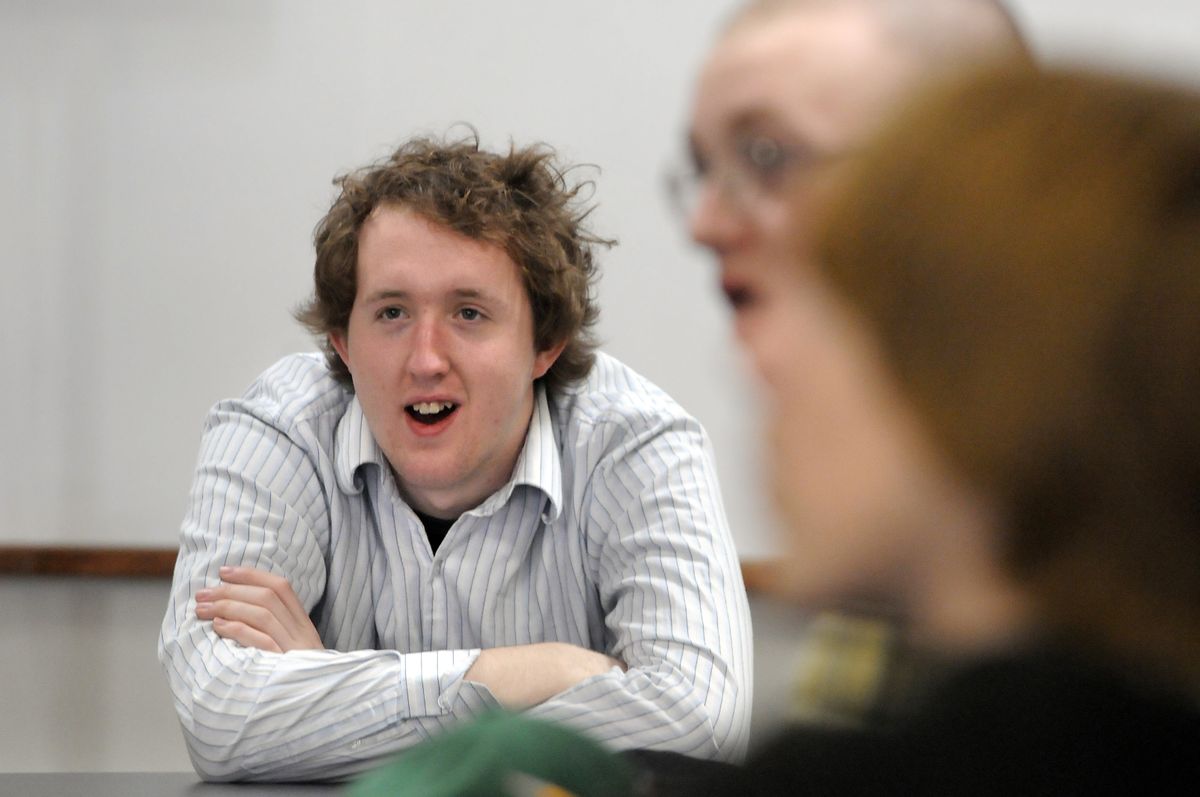Alternative programs make connections with students that keep them coming back

The principal’s office at Havermale High School is more like a lounge, with a open door and rare moments of solitude.
It isn’t trouble that brings students to Principal Fred Schrumpf’s door. The teens drop in to grab a juice box out of Schrumpf’s small refrigerator, eat lunch or to get advice on a math problem. Sometimes they ask to store their bicycles, or a beloved skateboard.
Sometimes it’s simpler.
“Hey, do you have a quarter?”
Schrumpf digs in his pockets. Whatever his students need, he and his staff do their best to provide.
“Nobody here is anonymous,” Schrumpf says of his northwest Spokane high school of about 400. Havermale is an “alternative” school – what many people assume is the last stop for teens who can’t hack it in traditional high schools.
But that perception is changing. Area alternative schools have become known more as schools of choice, an option to keep students engaged. The alternative schools are smaller – about 300 to 400 students on average, with class sizes of 10 to 15 students – and able to provide one-on-one instruction that many at-risk students need and cannot get in high schools of 2,000 students.
“We know about a third of students are dropping out, mainly because they don’t make a connection,” Schrumpf said.
According to Communities in Schools, a national dropout prevention organization that has programs in Spokane, 30 percent of Spokane County high school students drop out.
That figure is a matter of debate. According to state education officials, about 19,000 high school students statewide dropped out, or 6 percent.
The state determines the dropout rate by looking at the number of students who begin each school year compared with those who finish. Communities in Schools, however, will follow one Spokane-area class, looking at the number of students who begin ninth grade and those who graduate.
Nationally, research shows that the graduation rate is between 68 percent and 71 percent, meaning about one in three students doesn’t finish school.
Communities in Schools is working with area middle schools to provide services to at-risk and low-income children, including backpacks with food, school supplies, and family support programs. It’s helped about 900 students so far this year. Statistically, the dropout rate disproportionately affects minorities and children who live in poverty.
“We are trying to reach kids earlier and in conjunction with the alternative programs, so that maybe when they go into the regular high schools they will acclimate better,” said Ben Stuckart, Communities in Schools’ executive director.
Administrators say schools need to provide alternatives not just for at-risk kids, but for all students.
“In this day and age, we should have variety,” said Larry Bush, the principal of Spokane Valley High School, an alternative school operated by the West Valley School District that serves about 300 students. “All kids aren’t the same,” and schools need to learn adjust, he said.
Kids and parents shop around more now than they did even five years ago, looking for the best fit between student and school, Bush said.
Spokane Valley High School, like Havermale, is small. Students at Spokane Valley take courses that let them connect to the outside world, such as landscape design and horticulture. Spokane Valley has a greenhouse on campus where students grow the lettuce served for lunch. A once-a-year a plant sale brings in about $9,000 for the greenhouse program.
“We are a very hands-on school,” Bush said. “We are teaching the same standards and curriculum that you get in a comprehensive high school, we just teach it in a different format.”
Ten years ago, alternative schools might have had lower academic standards, but not anymore, officials said.
“There’s no alternative standards for graduation,” Schrumpf said. Students still have to pass the WASL, and they still have to complete a culminating project. What makes it work, educators say, is the individual attention they get in a smaller atmosphere.
Students at Havermale are put into small groups and assigned a core of teachers they stay with for two years – in ninth and 10th grades, and 11th and 12th grades. They spend an hour each day with an advisory teacher talking about life skills and lessons.
A study found that students cite three reasons for dropping out before arriving at Havermale: negative previous school experiences where they felt they were treated unfairly, family struggles and mobility, and inability to cope with problems.
“We give students a reason to come to school each day,” Schrumpf said. “We create a real support network.”